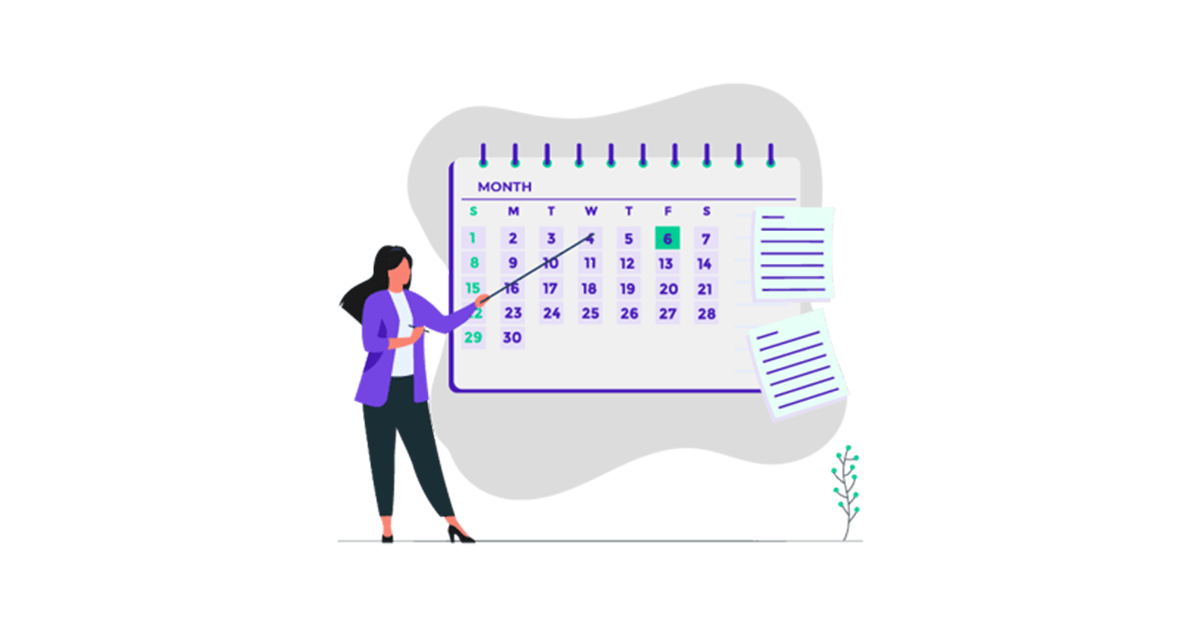8 financial model best practices for startup founders
A great financial model is critical for every startup. It allows you to get a glimpse of your future financial data. It allows you to make better...
9 min read
 Logan Burchett
March 17, 2023
Logan Burchett
March 17, 2023
In today’s fast-paced and dynamic startup ecosystem, it’s essential for founders to have a crystal clear understanding of their startup’s financial performance through forecasting.
One way to analyze your financial position is a top-down analysis, where you look at the size of the total addressable market, break it down into segments and categories, and then divide those segments and categories among competitors by assuming each company’s current or potential market share.
While top-down financial analysis is useful for generating a high-level overview of a market or segment, it typically doesn’t provide enough detail to help founders make informed decisions about their operations.
This is where bottom-up financial modeling comes in. By starting with the actual data that’s available about your business today, you can build a financial model that allows for a more detailed and nuanced understanding of your financial situation.
In this post, we’ll explore five reasons why a bottom-up financial model is a critical component of a founder’s decision-making toolset, along with real-world examples to illustrate each reason.
Key Takeaways:

A bottom-up financial model provides a level of granularity that’s not possible with top-down analysis. By breaking your financial performance down into its individual components, you can gain insights into the factors that drive your outcomes, hidden inefficiencies, and the most impactful areas of improvement.
This level of detail can be particularly useful if your startup needs to optimize its operations and perform as efficiently as possible. However, it’s important to note that while granularity is helpful, a financial model can become overly granular; to the point where it becomes unusable.
Simple financial models, built from the bottom up, are often the best.
You’re looking for that sweet spot where your financial model provides enough granularity to inform your decisions, while retaining the simplicity that makes it easy to use and understand.
Focus on modeling your most important revenue streams and cost components, rather than trying to capture every minute detail of your operation. This allows you to zero in on the key drivers of your performance and make more informed decisions about where to allocate your resources.
A SaaS company could model its revenue streams based on its product offerings, such as license fees, subscription fees, and support fees. By doing this, its founders would gain forecasting insight into which product offerings are driving the most revenue growth, and they could adjust their strategies accordingly.
However, if the same company were to model revenue based on individual customer contracts, the financial model would likely become overly complex and unwieldy. As new and unique contracts were added it would quickly become difficult to understand, and useless as a decision-making tool.
Overly complex financial models can lead to analysis paralysis, where decision-makers spend too much time analyzing the data and not enough time executing on actual decisions. Don’t fall into this trap!

A bottom-up financial model can help you create more accurate forecasts about your near-term and long-term performance. When you break your finances down into individual components, you gain a better understanding about which factors are most important, and you can begin to predict how they will drive your overall performance and create your future outcomes.
A key advantage of a bottom-up financial model is that it allows you to model your individual revenue streams and cost components separately. This lets you forecast each component separately based on your current data, and then aggregate those forecasts to create a data-driven projection of your financial future.
Having data-driven projections is critical in businesses where different products, services, and regions all contribute differently to the overall forecasting of financial performance.
Bottom-up forecasting doesn't rely on a single formula, but it's a method where you start with granular data at the lowest level of detail and aggregate it to forecast results at a higher level. Here’s a step-by-step approach on how it might typically be implemented:
Identify base units: Determine the smallest units for which you have reliable data or can make reasonable estimates. This could be sales per product, per customer, per day, etc.
Gather data: Collect historical data for these base units. This data could include unit sales, customer acquisition rates, churn rates, etc.
Estimate growth: Apply growth rates or other predictive models to each of these base units. These rates can be based on historical trends, market research, or other analytical methods.
Aggregate upwards: Sum these individual forecasts to build up to a total forecast. For example, summing up product sales forecasts to get total sales forecasts, then estimating the revenue based on pricing strategies.
Adjust for synergies and overheads: Factor in efficiencies or increased costs that might arise from scaling, new market entries, or other strategic changes.
Here’s a simplified mathematical representation to illustrate: Total Forecast=∑(Base Unit Forecast×Growth Factor)Total Forecast=∑(Base Unit Forecast×Growth Factor)
For example, if forecasting sales revenue: Revenue=∑(Units Sold×Average Price per Unit)Revenue=∑(Units Sold×Average Price per Unit)
This method ensures that the forecast is rooted in the actual operational drivers of the business, making it detailed and typically more accurate within the scope of the existing business structure and market conditions.
Let’s assume that a manufacturing company models its revenue and expenses by region. This allows its founders to see which regions are performing well, and which regions need improvement. They are able to make informed strategic decisions about where to allocate resources now, and in the future.
Because the model is based on the actual performance data for each region, the founders can evaluate the impact of risks and opportunities that are unique to one particular region, without impacting the overall projections for the entire company.
If regional supply shortages impact the cost of raw materials in one area, the founders can adjust their manufacturing schedule to minimize the impact of that shortage. But if the shortage is global, the model will show its impact across all regions.
With this insight, founders can perform sensitivity analysis to understand the risks that would have the largest potential impact on their outcomes. Then they can take action to proactively insulate themselves from the most likely issues, based on changing conditions in their regional markets.

By understanding the individual drivers of overall performance, businesses can make better forecasting decisions about where to allocate resources and where optimization is needed.
When you know exactly how each cost component influences your total expenses, you can focus your efforts to reduce costs where they are the most sensitive to your profitability. With a solid understanding of your cost structure from the bottom up, you begin to find opportunities for strategic cost-cutting initiatives.
A construction company could break its expenses down into individual components such as labor, materials, and equipment rental costs. This lets the company identify which cost components are most significantly driving up its expenses.
If the financial model reveals that labor costs have risen due to an abundance of overtime, management can respond by hiring more laborers to accomplish the same work at a lower hourly rate. This lets the company reduce its costs, improve its profitability, and remain competitive in the market.
If the cost of certain materials has risen due to a change in a supplier relationship, that change is easy to spot in a bottom-up model, which provides the prompt to begin negotiating better prices or finding an alternate supplier.
Communication is critical for early-stage founders. Investors and other stakeholders need transparency to effectively manage their risks, and they seek out founders who provide it. A bottom-up financial model enables founders to clearly communicate their performance with meaningful metrics.
When your forecasting model is composed of individual streams and components, you can provide a more detailed and nuanced explanation of your financial results and accentuate the individual revenue streams and customer acquisition channels that are most relevant to your business and your investors.
For a real-world example, let’s consider a SaaS company again. We’ll assume this SaaS company has its revenue broken down into individual streams, such as license fees, subscription fees, and support fees.
If the company experiences a decline in revenue due to a drop in license fees, the founders can report this to investors along with supplemental numbers that show their subscription fees continuing to grow. This builds confidence and credibility with stakeholders, who are pleased to see that their portfolio company has such a strong handle on the state of its operations.
In this case, the model again provides a prompt for the founders to investigate the cause of the drop in license fees, which may be rooted in a product issue, a change in the competitive landscape, or some other factor.
On the other side of the coin, if one revenue channel is doing exceptionally well, the model exposes this to founders. This gives them an opportunity to both communicate the increase to stakeholders and also reallocate resources to maximize the revenue growth while that stream is still accelerating.

A bottom-up financial model can be used to build a more accurate valuation of your business. By understanding the drivers of financial performance and accurately forecasting future outcomes, you can build a more accurate valuation model that takes into account the unique characteristics and growth prospects of every acquisition channel and revenue stream.
To understand the impact of bottom-up modeling on valuation, let’s look at a biotech company. In the biotech industry, the value of a company is often based on potential future cash flows from a pipeline of new drugs which are still in development.
A bottom-up model for a biotech company would likely be structured around those upcoming drugs - factoring in the research and development costs as well as potential licensing agreements for each.
If the financial model shows that one particular drug in the pipeline has high potential revenue, but also high research and development costs, the company may decide to allocate additional resources to speed up the development process and shorten the timeline for realizing that revenue.
On the other hand, if a particular drug has low development costs, but also low potential revenue, the company may decide to focus on other drugs with higher long-term potential.
By including and analyzing these individual streams, the company can optimize its pipeline to maximize future cash flows and drive its valuation upward. A bottom-up model will accurately portray the long-term potential of each new drug in the pipeline, as well as the overall growth potential of the entire company.
Clearly demonstrating the future cash flow potential of a biotech company’s drug pipeline is essential for attracting investors. A bottom-up financial model helps a biotech company effectively communicate its cash flow potential, as well as its understanding of the market and commitment to addressing unmet medical needs.
A bottom-up revenue model is a method of forecasting a company's revenue by estimating sales for each individual product or service, then summing these to calculate total revenue. . This approach starts with detailed, granular data and builds up to a larger, overall revenue projection.
A bottom-up expense model is a method of forecasting a company's expenses by estimating the costs associated with each individual department, project, or activity. These detailed expense projections are then aggregated to determine the company's total expected expenses.
In accounting, a bottom-up approach involves forecasting financial metrics, such as revenue or expenses, by starting with detailed, granular data at the individual product, service, or departmental level. These individual projections are then summed up to create an overall financial forecast for the company.
Bottom-up analysis is a method of analyzing a company's financial performance by examining detailed data at the individual product, service, or business unit level. This approach focuses on understanding the specific drivers of revenue, expenses, and profitability within a company, and then aggregating these insights to form a comprehensive view of the company's overall financial health.
A: A bottom-up revenue model is a method of forecasting a company's revenue by estimating sales for each individual product or service, then summing these to calculate total revenue. This approach starts with detailed, granular data and builds up to a larger, overall revenue projection.
A: A bottom-up expense model is a method of forecasting a company's expenses by estimating the costs associated with each individual department, project, or activity. These detailed expense projections are then aggregated to determine the company's total expected expenses.
A: In accounting, a bottom-up approach involves forecasting financial metrics, such as revenue or expenses, by starting with detailed, granular data at the individual product, service, or departmental level. These individual projections are then summed up to create an overall financial forecast for the company.
A: Bottom-up analysis is a method of analyzing a company's financial performance by examining detailed data at the individual product, service, or business unit level. This approach focuses on understanding the specific drivers of revenue, expenses, and profitability within a company, and then aggregating these insights to form a comprehensive view of the company's overall financial health.
In today’s data-driven marketplace, a bottom-up financial model is increasingly important for companies and investors alike. By breaking down financial performance into its individual components, a bottom-up model provides more detail and a nuanced understanding of any company’s financial numbers.
This creates better and more accurate forecasts, more informed decision-making, and more meaningful communication with stakeholders. If you are planning to build a financial model for your startup, you should strongly consider starting with your current accounting data and building your model from the bottom up.
If you’re going to build in a spreadsheet, use one of our free templates to make the process as easy as possible. And if you’re looking for a full-service financial modeling solution, check out Forecastr. Our analysts work side by side with you to create a dynamic and accurate model that is custom-tailored to suit your business.
Get notified about new events, free resources, and fresh content

A great financial model is critical for every startup. It allows you to get a glimpse of your future financial data. It allows you to make better...

Running a startup or a small business can feel like sailing through uncharted waters when you’re managing finances. As a founder, keeping your ship...

Your research is complete, and you have built a financial model that tells a great story about your startup. You’ve shared the model with investors,...